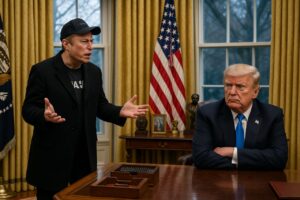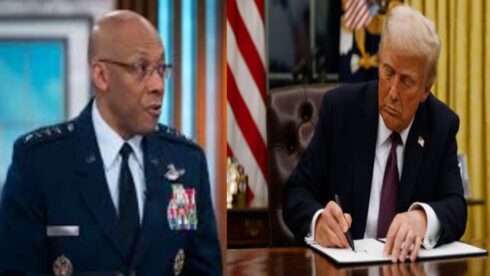U.S. President Donald Trump has dismissed General Charles Q. “CQ” Brown Jr. as Chairman of the Joint Chiefs of Staff. The announcement, made late Friday, has sent shockwaves through Washington, raising concerns over the stability of the Pentagon’s leadership. Brown, who took office in October 2023, had served just 16 months in the role before his abrupt removal.
While the White House has not provided a detailed justification, speculation is mounting that Brown’s removal is linked to policy disagreements over military modernization and foreign engagements. His tenure focused on enhancing U.S. military readiness, increasing cyber capabilities, and reinforcing alliances, particularly in the Indo-Pacific. His departure marks a significant shift in the administration’s defense priorities.
Gen. C.Q. Brown’s Legacy and Contributions
General Brown, an Air Force veteran with over 40 years of service, was only the second African American to hold the highest military position in the country. His leadership was instrumental in advocating for a modern, agile force capable of countering emerging global threats. Under his guidance, the military pursued a more technology-driven approach, including investments in artificial intelligence, hypersonic weaponry, and next-generation fighter jets.
Additionally, Brown championed efforts to strengthen military recruitment and address retention challenges within the armed forces. His commitment to fostering diversity and inclusion was seen as a step toward making the military more representative of the nation it serves. His dismissal has sparked debate over whether these initiatives clashed with the administration’s vision for the military.
President Donald Trump’s Official Statement
President Donald Trump announced the firing of General Brown via his Truth Social platform, thanking him for his years of service but offering little insight into the reasoning behind the decision. “I want to express my gratitude to General Charles ‘CQ’ Brown for his dedicated service to our great nation. His leadership has been invaluable, and we wish him well in his future endeavors,” Donald Trump stated.
Despite the neutral tone of the statement, insiders suggest a growing rift between Brown and the administration over defense policies, including strategies regarding Ukraine, China, and military culture. The president’s decision aligns with his broader agenda of restructuring the Pentagon’s leadership to reflect a more traditional warfighting approach.
The Appointment of Lt. Gen. Dan Caine
In a move that surprised many military analysts, Donald Trump nominated retired Air Force Lieutenant General Dan Caine as Brown’s successor. Caine, a former fighter pilot and senior CIA military affairs director, brings extensive operational experience but lacks the traditional pathway to the chairman position. His appointment raises questions about whether a presidential waiver will be required for confirmation.
Caine’s nomination signals a potential shift in military priorities, with a greater emphasis on combat readiness over institutional reforms. His background in intelligence and special operations suggests a focus on unconventional warfare, cyber defense, and counterterrorism strategies. However, his lack of experience as a service chief or combatant commander may pose challenges in securing Senate approval.
Reaction from the Defense Community
The firing of General Brown has drawn mixed reactions from military officials, lawmakers, and defense analysts. Supporters of the move argue that Donald Trump is aligning the Pentagon with his vision of a more aggressive and streamlined military, unburdened by bureaucratic constraints. They contend that Brown’s focus on diversity initiatives and modernization strategies may have detracted from core combat preparedness.
Conversely, critics see the dismissal as a politically motivated decision that undermines the integrity of military leadership. Some argue that Brown’s removal disrupts continuity at a critical time, as the U.S. faces mounting geopolitical tensions in Eastern Europe and the South China Sea. Defense Secretary Pete Hegseth, a staunch critic of “wokeism” in the military, acknowledged Brown’s service but emphasized the need for leadership realignment.
Broader Implications for U.S. Military Policy
The shake-up at the Pentagon is part of a larger trend under the Donald Trump administration, which has prioritized a return to traditional military values and warfighting capabilities. Alongside Brown’s dismissal, Admiral Lisa Franchetti, the Chief of Naval Operations, and Air Force Vice Chief of Staff General James Slife have also been relieved of their positions. These moves suggest a deliberate restructuring to reinforce a more combat-focused military doctrine.
As the nomination process for General Brown’s successor unfolds, the Senate confirmation hearings will likely become a battleground for debates over military leadership, national security priorities, and political influence in defense affairs. The coming weeks will determine whether this reshuffling strengthens or destabilizes America’s military command at a time of global uncertainty.














